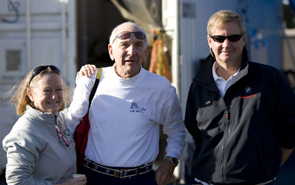
|
|
|
Scuttlebutt News: BMW Oracle Racing Trimaran Photos by Gilles Martin-Raget/BMW Oracle Racing. The BMW Oracle Racing team’s BOR 90 - aka their Deed of Gift challenging trimaran - has been relocated from its initial trialing location in Anacortes, WA to San Diego, CA, and began testing again on October 7, 2008. Scuttlebutt founder Tom Leweck joined the team on October 11th to see firsthand what all the ruckus is about. Here is his story: Taming the Beast I’m not sure what I was expecting when I walked into the San Diego BMW Oracle Racing camp, but I was not quite prepared for the dead serious, down to business, “full court press” atmosphere that prevailed. Forget Kenneth Grahame’s oft-quoted line about the joys of “… messing around in boats." What I saw were professional sailors putting in long hours conducting the sea trails on a nasty looking, incredibly physical and powerful multihull that may never become fully tamed.
The BOR tri is still very much in the sea trial phase. To aid in the analysis, the boat and its rig are covered with sensors and cameras. The data and images they produce is viewed, analyzed and stored on computers on both the sailboat and support boats. There was a lot of data collected the day I watched the tri off San Diego. During the course of the afternoon the team gathered information while sailing with a single, a double and even a triple reef tucked into the giant, square-top mainsail. Loads, shapes and other data was also collected while using four different sails in front of the 158-foot canting mast – a staysail, a Solent jib and two different genikers. You begin to appreciate what a challenge this boat is as you witness how time consuming and physical it is to make even a simple sail change. Obviously, the time factor will improve as the team learns the boat, but what’s not going to change is how much brute strength is required.
As I looked at the helmets and other gear worn by the crew, and witnessed the forces generated by this as yet un-tamed beast, I understood why BMW Oracle Racing is not taking anyone for sailboat rides right now . . . and why the team never goes sailing without a paramedic on one of their support boats. No question about it -- the BOR pros are earning their money. back to top On Monday, September 8, 2008, Scuttlebutt publisher Craig Leweck was in Anacortes, WA during the first day that the BMW Oracle Racing team opened their construction base to the media. They had been trialing the BOR 90 trimaran for a week, and were now ready to reveal some details on their Deed of Gift challenger. Below are some of his observations. Giving Anacortes some sizzle Turning 90 feet into 100 feet Jack be nimble... and quick Points of dispute Like walking on the moon Forum questions and replies Like walking on the moon
Here are some of the more notable replies we did receive: 
back to top Points of dispute During the course of litigation, dating back to when Golden Gate Yacht Club (BOR’s club) initially filed suit on August 22, 2008, there have been three significant disputes regarding the Deed of Gift boats: the BOR boat description, where the boats are constructed, and the certification of the BOR boat. These now appear to be non-issues based on the following: 
Links Deed of Gift: www.sailingscuttlebutt.com/news/07/dog BOR Challenge: www.ggyc.com/GGYCChallenge.pdf back to top Jack be nimble... and quick
Going upwind there are a few interesting aspects to note. The mast can be canted to windward up to 8 degrees, which means that when the boat is sailing on the main hull and leeward float, the mast is roughly vertical. The mast only has one set of side stays, and they are mounted aft on the floats, just forward of the aft beam. When sailing upwind, the loaded windward shroud twists the aft end of the float up. According to the team, while this looks odd, the twisting is limited to the windward float, and since the hulls in the water remain properly aligned, the extra weight needed in construction to prevent this would not be warranted. There is a huge hydraulic ram that connects the side stay to the float, which is then used to adjust the cant. The controls for the ram are in the form of foot pedals at the helm station, with another set of controls at the mainsheet. Watching the boat tack is pretty impressive… here are the steps to observe: Both floats have curved foils that are designed to give lift, but they saw limited use on this day, and it is unclear how they will be used in a tack. There is also a trim tab on the main hull daggerboard, which is contolled by the center wheel at the helm station. The team was clearly sailing the boat carefully, but they finally pushed a little harder during the end of the day. While sailing upwind in no more than 9 knots of breeze, they heeled the boat enough to sail on only the leeward float, making even speed with our media boat at roughly 26 knots. 


back to top Turning 90 feet into 100 feet
BOR wanted a revised Protocol. To maximize their negotiating leverage, BOR decided to submit a Deed of Gift challenge, much like the New Zealand team did following the American Stars & Stripes win at the 1987 America’s Cup. In structuring their formal challenge, BOR knew two things: They had to provide the dimensions of the boat they intend to challenge with, and they could not make the same mistake New Zealand did, which was to challenge with a 90-foot monohull that was later beaten easily by the American catamaran in 1988. BOR had to insure they were the second team to challenge (thus becoming the primary challenge if they could successfully nullify the Spanish challenge), so they quickly assembled a consortium of multihull experts to determine the dimensions for the fastest boat that the Deed of Gift would allow. The Deed had limits on size, plus required certain specifications to be disclosed. Upon filing their challenge on July 11, 2007, BOR described their boat as having a 90-foot length at load waterline, a 90-foot beam at load waterline, a 90-foot extreme beam, a 3-foot hull draft, and a 20 draft with boards down. BOR considered their Deed of Gift challenge to be a placeholder tactic. They hoped the threat of a multihull America’s Cup would bring the Alinghi team to the negotiating table to revise the Protocol to what BOR believed would be a more equitable multi-challenger event. BOR also began the legal process within the New York court system to prove that CNEV was not an eligible challenger, a process that now rests in the hands of the Court of Appeals. Both teams claim to have made a considerable effort to agree on suitable Protocol revisions, but ultimately they were unable to resolve their differences. When the courts found that BOR would be the new Challenger of Record (a decision that is currently under appeal), and given that the date for racing could possibly be in the fall of 2008 (which now will not occur), the time had come in late 2007 for the teams to proceed with the terms of the Deed of Gift challenge. With the BOR trimaran now revealed, their announced 90-foot boat is decidedly longer. The secret is in the floats (aka amas or outer hulls), which extend both forward and aft of the main hull. When the boat is level, both floats are in the water at the same time, thus providing the described beam at load waterline. However, in this position, their waterline length is a small fraction of their actual length, which is understood to be 100 feet. The main hull total length and waterline length appear identical at 90 feet. When sailing in light winds, the boat rides on the main hull and the leeward float. However, with sufficient wind strength, the boat will heel enough to ride on only the leeward float, thus benefiting from its longer immersed waterline length (approx. 100 feet) and smaller hull form, a feat that has ably been demonstrated in no more than nine knots of wind. Links Deed of Gift: www.sailingscuttlebutt.com/news/07/dog BOR Challenge: www.ggyc.com/GGYCChallenge.pdf Legal analysis: www.sailingscuttlebutt.com/news/07/cf 
back to top Giving Anacortes some sizzle (Monday, September 8, 2008) To drive to the San Juan Islands in the Pacific Northwest, you need to take a ferry, and the prominent Ferry landing is in Anacortes, WA. For this town of not quite 15,000, that was its primary distinction. But when the BMW ORACLE Racing team chose Anacortes to be the site where its two AC class boats would be built for the 2007 America's Cup, and now again for its Deed of Gift 90-foot trimaran challenger, that all changed. While the AC boats left the shed with little fanfare, tightly wrapped and quickly flown out of town, the trimaran has stayed, and on August 25th was christened on-site, and lowered into Fidalgo Bay adjacent to the boat yard where it was constructed on the Anacortes waterfront. With the weather window still open in this part of the country, the team decided to test and trial their new horse locally on the Rosario Strait, and utilize their existing facilities to address any design and construction issues. To arrive in Anacortes, it is an hour and a half drive north of SEA-TAC, the Seattle-Tacoma International Airport. The team has secured the services of a transportation company, and needless to say, they travel the route often. The driver noted that most of his passengers have been foreigners. The girl at the hotel front desk was curious too, and wondered why there were so few Americans involved in the America's Cup. In both instances, however, it was clear that the activities of the team had brought some sizzle to this ferry landing town. back to top |






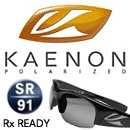
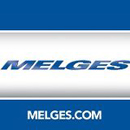
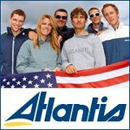
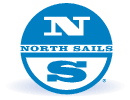

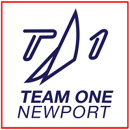


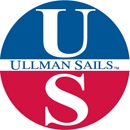


|

